A fully loaded miniature stainless steel router rack
A few folks have asked me what I use to keep our various networking and internet connectivity kit neat and tidy, yet reasonably service friendly. Well, I have to admit that it was rather a muddle for a many years. That was until I decided to make a simple multistorey stainless steel router rack. Moreover, as luck would have it, I did so very cheaply too. It’s made from a slightly battered sheet of 1.2 mm military-grade perforated stainless steel I found under our old shed, a few years back. I simply cut it into 5 off 200 mm x 200 mm plates, ensuring the holes lined-up nicely.
Worth noting that suitable metal sheet is also available reasonably cheaply via eBay or similar. For this purpose, aluminium sheet would be perfectly adequate. You might even be able to persuade the seller to cut it for you, if you ask him/her very nicely. It’s just that I had the stainless sheet already, for free. I just needed to wash the mud off it and and cut it to size. 🙂
I bolted the five plates together with 4 off M5 x 200mm stainless steel threaded rods and a handful of M5 nuts and penny-washers to separate the shelves. Its edges are trimmed with nylon flexible cable-gland strip, to ensure cables (and fingers) would not be damaged by sharp edges. More observant readers might also note I used stainless steel dome nuts at the ends of the threaded rod to act as feet – and to cover sharp edges on the upper ends.
It’s as tough as old boots and the perforated stainless keeps all the kit it holds nice and cool. So it doesn’t need a noisy, power-consuming cooling fan either…
Despite its diminutive size (approx 200 mm x 200 mm x 200 mm), this stainless steel router rack holds a lot of kit too…
- From the top:
- Draytek 130 ADSL modem.
- TP-Link TL-R470+ v6 load-balancing router and firewall.
- Wiwav WDH-16GT2GF-DC10/100/1000Mbps 18-Port (16 port copper + 2 fibre) small footprint industrial Ethernet switch.
- Avigilon 4-Port h.264 analog to digital video encoder.
- Environment monitoring kit including…
- Raspberry Pi4 8GB 64-bit computer, Running GNU/Linux. Apache web server, MariaDB MySQL database and PHP – hosting Zoneminder (security camera) and Weewx (weather station) servers, in die-cast aluminium fanless case.
- 1TB m.2 solid state hard drive (for operating system and historical data).
- 12 volt to 5 volt 5 amp USB power adaptor (4 ports).
It also has a common low-voltage power source rather than a shedload of wallwarts, as detailed here. You will notice the Aercus ‘WeatherSleuth’ weather station transponder strapped to front. I.e the thing with all the blue LED’s. That’s because its aerial needs to point away from the metalwork, and towards its wireless sensor clusters.

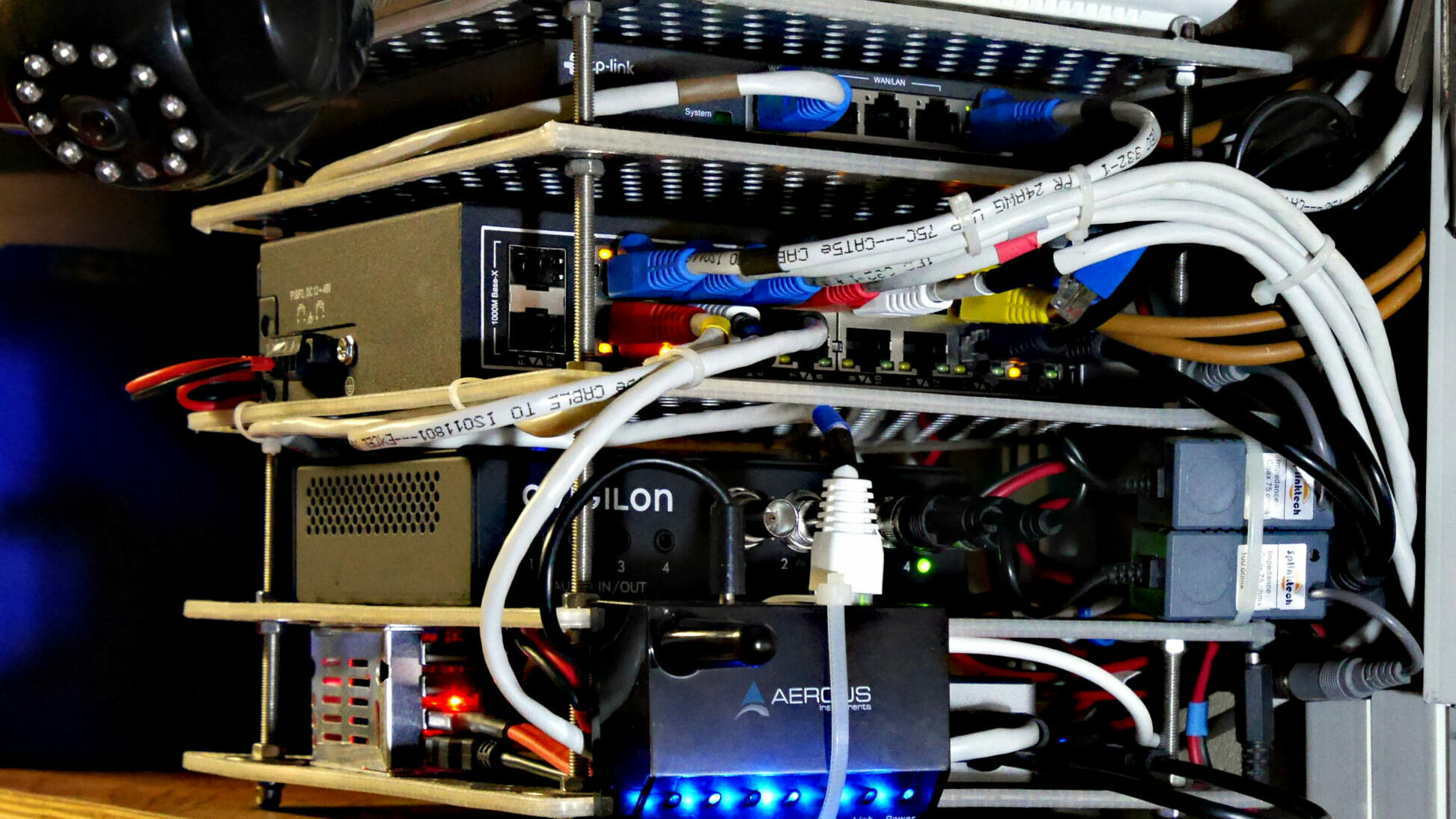
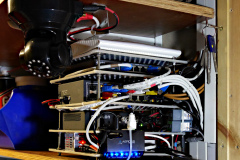
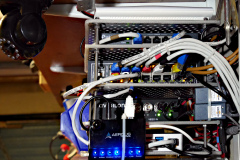
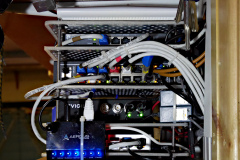


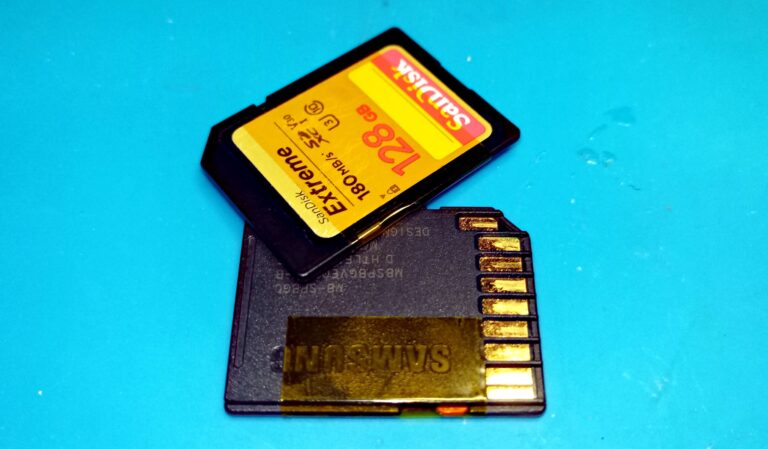


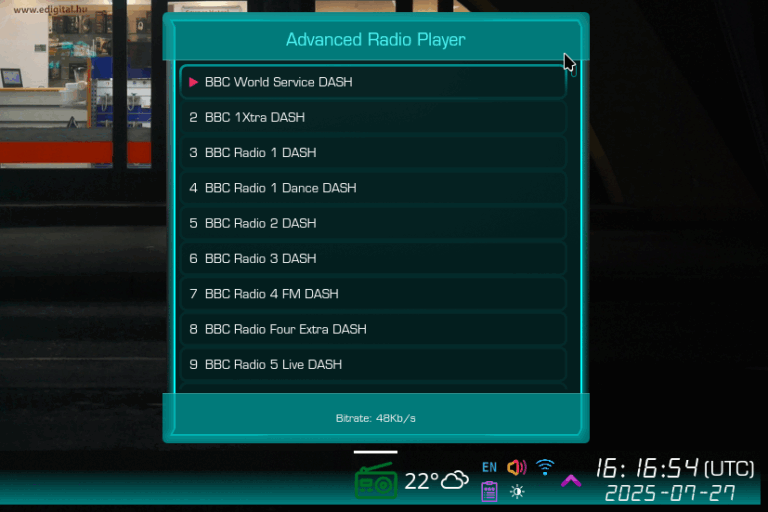
2 Comments